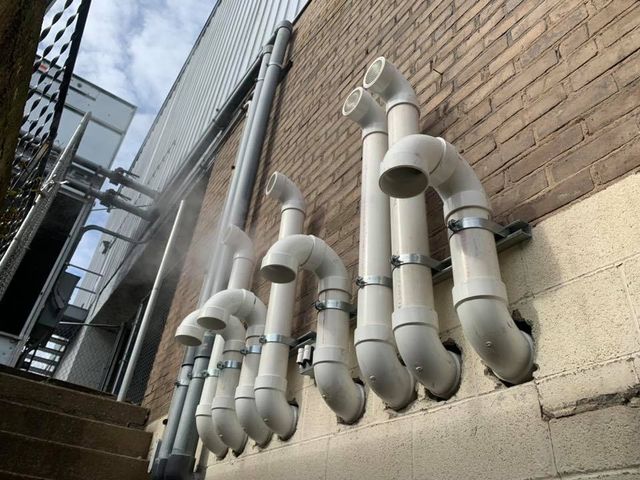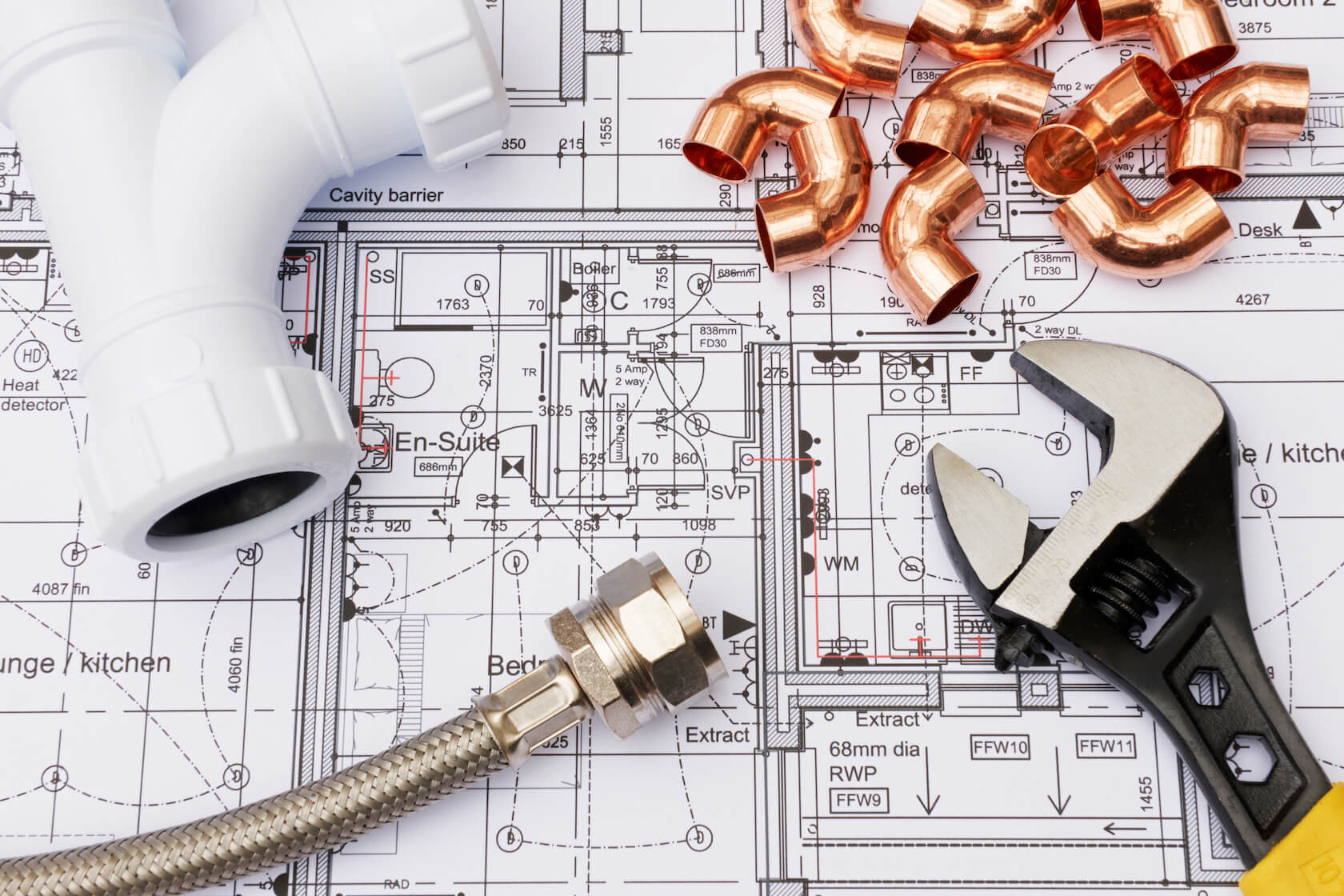The Key Components of Your Property's Plumbing System
The Key Components of Your Property's Plumbing System
Blog Article
Just how do you feel about Understanding Your Home's Plumbing Anatomy?

Recognizing just how your home's plumbing system works is vital for every single home owner. From delivering clean water for drinking, cooking, and bathing to securely eliminating wastewater, a properly maintained plumbing system is essential for your household's health and wellness and convenience. In this thorough overview, we'll check out the complex network that composes your home's pipes and deal pointers on upkeep, upgrades, and taking care of usual issues.
Intro
Your home's pipes system is greater than just a network of pipes; it's a complex system that ensures you have access to clean water and efficient wastewater removal. Knowing its components and just how they interact can assist you avoid costly fixings and make sure whatever runs efficiently.
Fundamental Parts of a Pipes System
Pipes and Tubes
At the heart of your pipes system are the pipes and tubes that lug water throughout your home. These can be made from various products such as copper, PVC, or PEX, each with its advantages in terms of longevity and cost-effectiveness.
Fixtures: Sinks, Toilets, Showers, and so on.
Components like sinks, toilets, showers, and bath tubs are where water is utilized in your home. Comprehending how these components connect to the pipes system assists in diagnosing troubles and planning upgrades.
Shutoffs and Shut-off Factors
Valves regulate the flow of water in your pipes system. Shut-off valves are critical throughout emergencies or when you require to make repair work, permitting you to isolate parts of the system without interfering with water flow to the whole house.
Water System
Key Water Line
The primary water line connects your home to the community water system or a private well. It's where water enters your home and is distributed to different components.
Water Meter and Pressure Regulator
The water meter steps your water use, while a pressure regulatory authority guarantees that water moves at a risk-free stress throughout your home's plumbing system, stopping damages to pipes and fixtures.
Cold Water vs. Warm water Lines
Recognizing the distinction in between cold water lines, which supply water straight from the major, and hot water lines, which lug heated water from the water heater, helps in fixing and preparing for upgrades.
Drainage System
Drain Pipeline and Traps
Drain pipelines lug wastewater far from sinks, showers, and commodes to the sewer or sewage-disposal tank. Catches prevent drain gases from entering your home and additionally trap debris that might create clogs.
Air flow Pipelines
Ventilation pipes enable air right into the drainage system, avoiding suction that can reduce drainage and trigger catches to vacant. Proper ventilation is crucial for maintaining the integrity of your plumbing system.
Relevance of Proper Drainage
Ensuring proper drainage stops backups and water damages. Regularly cleansing drains pipes and keeping catches can prevent costly repair work and prolong the life of your pipes system.
Water Furnace
Types of Water Heaters
Water heaters can be tankless or conventional tank-style. Tankless heating units warm water as needed, while containers save warmed water for instant use.
Updating Your Pipes System
Factors for Upgrading
Upgrading to water-efficient components or changing old pipelines can improve water high quality, minimize water costs, and increase the value of your home.
Modern Pipes Technologies and Their Advantages
Discover technologies like smart leak detectors, water-saving bathrooms, and energy-efficient hot water heater that can conserve money and reduce environmental effect.
Expense Factors To Consider and ROI
Compute the upfront costs versus long-lasting cost savings when taking into consideration plumbing upgrades. Lots of upgrades spend for themselves via lowered energy expenses and fewer repair work.
How Water Heaters Connect to the Pipes System
Recognizing just how hot water heater attach to both the cold water supply and warm water circulation lines assists in diagnosing issues like insufficient warm water or leakages.
Upkeep Tips for Water Heaters
Frequently flushing your water heater to get rid of debris, inspecting the temperature settings, and evaluating for leakages can extend its life-span and enhance energy performance.
Usual Plumbing Issues
Leakages and Their Reasons
Leaks can happen due to maturing pipelines, loose fittings, or high water stress. Attending to leaks without delay protects against water damage and mold and mildew development.
Clogs and Clogs
Blockages in drains and commodes are commonly caused by flushing non-flushable things or an accumulation of grease and hair. Making use of drain displays and bearing in mind what goes down your drains pipes can avoid clogs.
Signs of Plumbing Troubles to Look For
Low water pressure, slow-moving drains pipes, foul odors, or uncommonly high water costs are indications of potential pipes problems that must be dealt with immediately.
Pipes Maintenance Tips
Regular Examinations and Checks
Arrange yearly plumbing examinations to catch concerns early. Search for indications of leaks, rust, or mineral buildup in faucets and showerheads.
DIY Upkeep Tasks
Easy jobs like cleaning tap aerators, looking for bathroom leakages using color tablets, or protecting revealed pipes in chilly climates can avoid significant plumbing problems.
When to Call a Specialist Plumbing Technician
Know when a pipes issue needs specialist competence. Trying intricate repair work without appropriate expertise can lead to more damages and greater repair work expenses.
Tips for Minimizing Water Use
Easy routines like dealing with leakages promptly, taking shorter showers, and running complete lots of laundry and meals can conserve water and lower your energy costs.
Eco-Friendly Pipes Options
Consider sustainable pipes products like bamboo for floor covering, which is durable and eco-friendly, or recycled glass for countertops.
Emergency Preparedness
Actions to Take Throughout a Pipes Emergency situation
Know where your shut-off shutoffs lie and just how to turn off the supply of water in case of a burst pipeline or significant leakage.
Relevance of Having Emergency Get In Touches With Useful
Keep get in touch with details for neighborhood plumbers or emergency services readily available for quick reaction throughout a pipes dilemma.
Ecological Influence and Preservation
Water-Saving Components and Devices
Mounting low-flow taps, showerheads, and commodes can dramatically reduce water use without sacrificing performance.
Do It Yourself Emergency Situation Fixes (When Relevant).
Temporary fixes like making use of air duct tape to spot a dripping pipeline or putting a container under a leaking faucet can reduce damage until a professional plumbing gets here.
Verdict.
Recognizing the composition of your home's pipes system equips you to maintain it effectively, saving money and time on fixings. By adhering to routine maintenance routines and staying educated concerning contemporary plumbing technologies, you can guarantee your pipes system runs effectively for years to come.
HOW YOUR PLUMBING SYSTEM WORKS
Which Pipes Do What?
Blue lines = fresh water supply entering the building Red lines = hot water supply entering the building Grey lines = pipes carrying waste away from the building and venting pipes carrying gases away from the building (through the roof) YOUR MAIN PLUMBING SYSTEMS
There are two main plumbing systems that support your home s basic plumbing needs one that brings clean water into your home, and one that sends dirty water away from your home. Connected to the toilet, bath, shower, and other faucets in your home, these two systems keep your water flowing in the right directions.
ACCESSING FRESH WATER
Fresh and clean water is brought into your home through the main water supply line . Filtered through one pipe, this water is pressured to flow into the various fixtures in your home at any given time.
This water can be sourced from a well located on your property, a pond or river (mostly cottages), or, as in most cases, from the city s municipal water treatment centre. However, it is important to note that water that is untreated, such as the water siphoned from ponds or rivers, may not be safe to drink. Personal water supplies always need to be treated for hardness and contaminants before consumed.
MUNICIPAL WATER SUPPLIES
Improve taste and odour Remove sediment Eliminate hardness Reduce chlorine COLD WATER SUPPLY VS. HOT WATER SUPPLY
Cold water flows into your home or building through the service line, which then distributes hot or cold water to your fixtures. This line is most commonly run through a central column that runs floor to floor. Hot water runs in short and straight pipes as the longer the pipeline, the more heat that will be lost in the transfer. Having shorter pipes also allows residents to access hot water more quickly.
WASTE WATER SYSTEM
Your wastewater system is divided into two parts pipes that send wastewater away from your home and venting pipes that send sewer gas away from your home. Sewage water travels through pipes that flush the water and waste towards local sewers that are operated and managed by your city or town. Most sewer systems rely on gravity to move the wastewater to where it needs to go.
The further away from your toilet or sink, the larger wastewater pipes become. This allows for waste to be disposed of from various parts of your home or business at once without pipe blockages. The angle and flow of these pipes are also essential for keeping your waste pipes clear of build up.
https://harrisplumbing.ca/how-your-home-plumbing-system-works/

As an avid reader about Exploring Your Homes Plumbing Anatomy, I imagined sharing that article post was a great idea. Sharing is good. You won't know, you may be doing someone a favor. We cherish your readership.
Schedule Now! Report this page